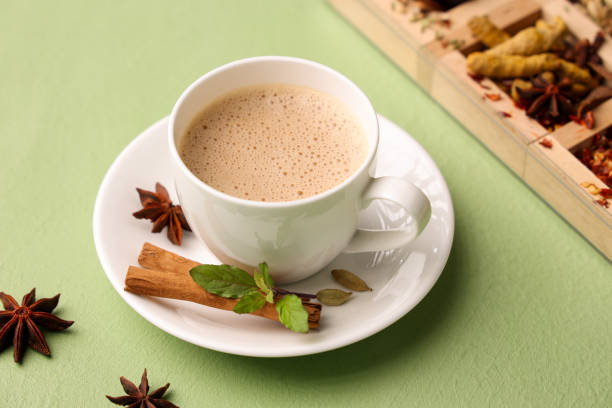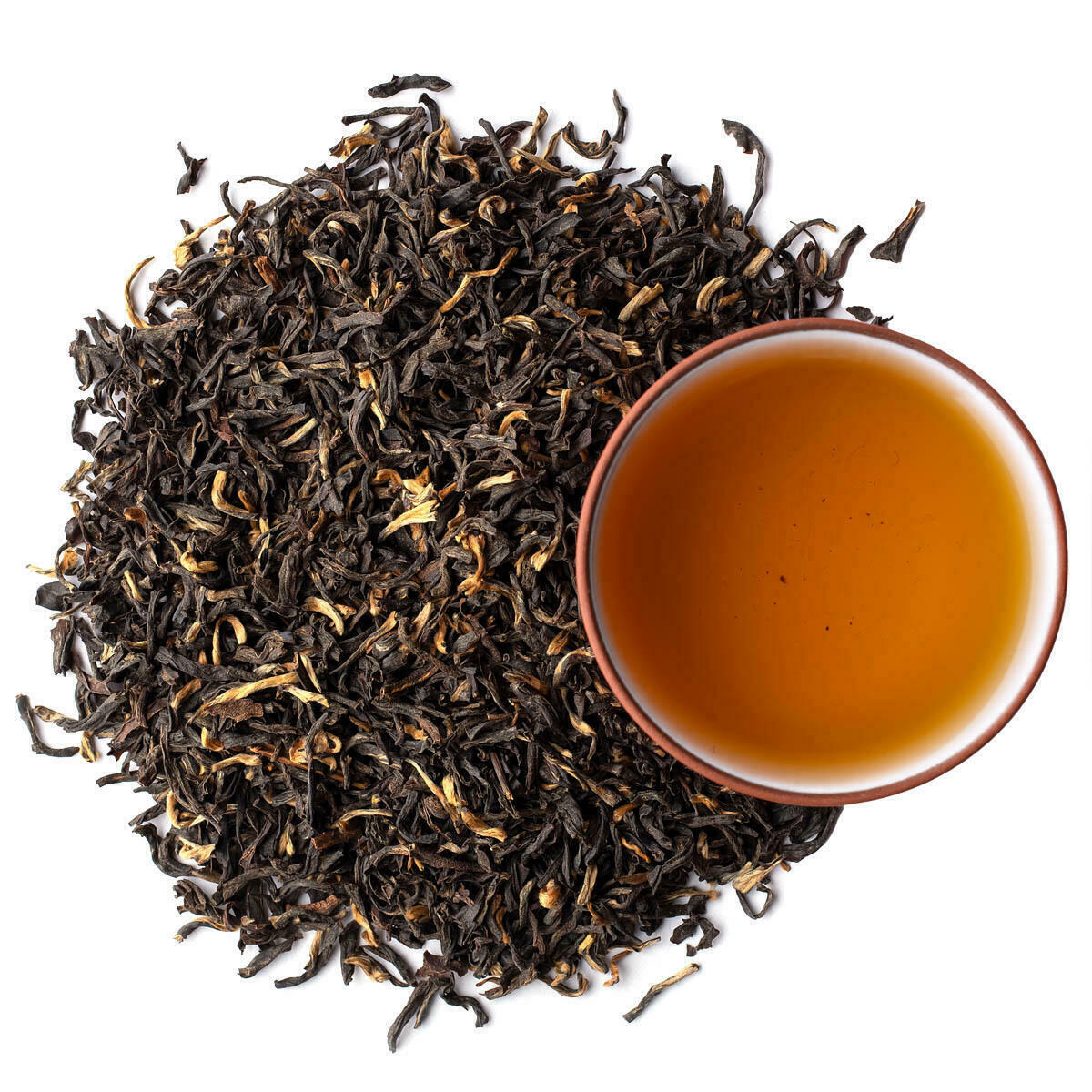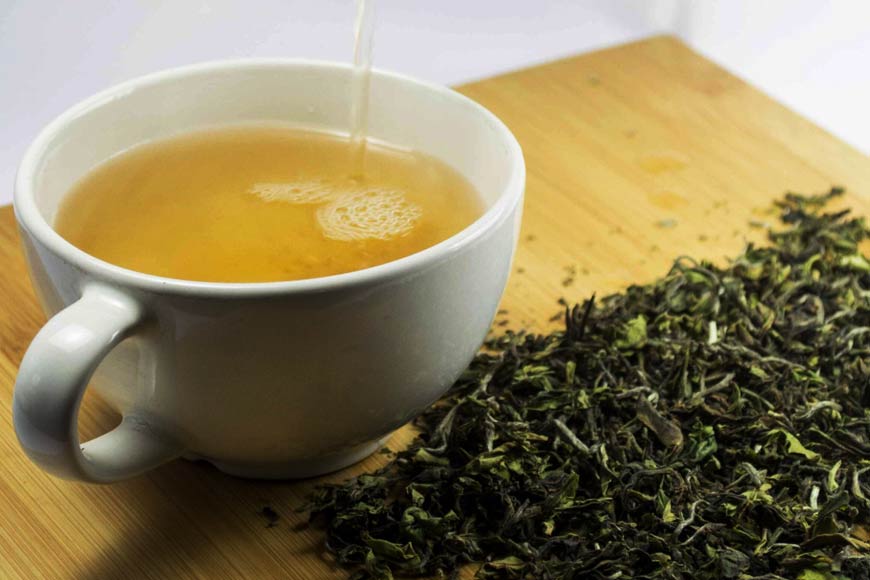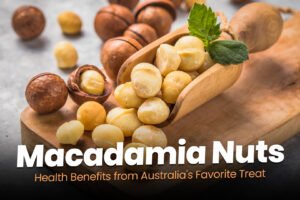
Your Chai Habit Might Need a Change — Discover Different Types of Indian Teas
Types of Indian Teas | Types of Teas in India | Matcha Tea | Matcha Tea Benefits | Herbal Teas Benefits
Teas, known as the most comfort drink called ‘Chai’ in India, are part of everyday life. India is the second-largest producer of tea in the world after China. Chai or tea is the most common drink in almost every household in India. It can be your morning energy kick or your 4 PM snack-time companion. Tea is also the drink typically offered to guests, often served with crispy snacks or biscuits.

Have you ever wondered where tea came from and how it became a staple drink in India? Let’s dive into this blog and explore how tea was introduced in India — and discover the many different 15 types of teas found across the country!
How Tea Became India’s Comfort Drink?
Your ancestors may have been told that tea came from China — which is true in terms of the plant’s origin — but milk tea, as we know it in India, is a different story. When the British colonized India, they discovered that Indian soil, especially in regions like Assam and Darjeeling, was perfect for growing tea. Initially, tea was consumed in the British style — light black tea with a bit of milk and sugar. To reduce dependency on Chinese tea, the British started large-scale tea plantations in India. Later on, tea became a very local invention, evolving through Indian creativity and colonial influence.

How Tea Works (Chemistry Behind It)
When we brew tea, we’re extracting a range of bioactive compounds from tea leaves. These include:
1. Caffeine
- A natural stimulant that increases alertness by blocking adenosine receptors in the brain.
- It stimulates acid production in the stomach.
2. Tannins (Polyphenols)
- These give tea its astringent, slightly bitter taste.
- They bind to proteins and iron, affecting digestion and nutrient absorption.
- They can irritate the stomach lining, especially when consumed on an empty stomach.
3. Theophylline and Theobromine
- Mild stimulants that relax smooth muscles, including the esophagus — this can allow stomach acid to rise more easily (leading to acid reflux).
4. Fluoride, Catechins, and Amino Acids (like L-theanine)
- Catechins are antioxidants.
- L-theanine promotes relaxation without sedation.
- Fluoride is present naturally but in excess, it may have long-term effects on bones/teeth.
Why Tea Feels Acidic for Some People
While tea is not strongly acidic on the pH scale (most teas fall between pH 4.5–6.0), it triggers acidity due to:
1. Stimulation of Gastric Acid
- Caffeine and tannins stimulate the stomach to secrete more hydrochloric acid.
- This can lead to bloating, heartburn, or acid reflux.
2. Tannins Irritate the Mucosa
- Tannins can bind to the stomach lining, causing a feeling of nausea or discomfort.
- Drinking tea without food can intensify this effect.
3. Relaxation of Lower Esophageal Sphincter (LES)
- Compounds like theophylline relax the LES, allowing stomach acid to backflow into the esophagus (acid reflux).
4. Individual Sensitivity & Body Type (Ayurvedic View)
- In Ayurveda, people with “Pitta” body type are more prone to acidity and heat-related issues. For them, black tea or masala chai may increase acidity.
- Herbal teas like chamomile or fennel are often better.
Bonus: pH Values for Comparison
| Beverage |
Approximate pH |
| Lemon juice | 2.0 |
| Black coffee | 5.0 |
| Black tea | 4.9–5.5 |
| Green tea | 7.0 (neutral) |
| Herbal tea | 6.5–7.5 |
Healthy Gut pH — What It Should Look Like Overall
- Balanced pH in the small and large intestine is around 5–7.0.
- If the gut becomes too acidic (below 5.5) or too alkaline (above 8.0), it can disrupt digestion and micro biome balance.
Tips to Reduce Acidity from Tea
- Don’t drink tea on an empty stomach.
- Add milk – it can buffer acidity (especially in masala chai).
- Try low-caffeine teas like white tea or herbal infusions.
- Avoid over-steeping, which increases tannin extraction.
- Rotate with alkaline teas like tulsi, ginger, or fennel.
- Traditional Teas (Based on Region)
These are the classic teas grown in various tea-producing regions of India.
- Assam Tea
 Aasam tea is known for its robust, full-bodied cup and deep amber colour. The tea is grown in the Assam region of India, where the unique climate and soil contribute to its distinctive taste. It is famous for its rich malty flavour and brisk and bold features.
Aasam tea is known for its robust, full-bodied cup and deep amber colour. The tea is grown in the Assam region of India, where the unique climate and soil contribute to its distinctive taste. It is famous for its rich malty flavour and brisk and bold features.
- Strong, bold, malty flavour
- Black tea grown in Assam
- Popular in Indian breakfasts and chai
2. Darjeeling Tea

Darjeeling tea is light-bodied, floral, and slightly musky or astringent. It is rich in polyphenols and supports heart health and is gentle on the stomach.
Best For: Those with high stress, mental fatigue, or those seeking a sophisticated, light tea experience without milk.
Avoid If: You’re looking for a strong wake-up tea or prefer your tea with heavy milk and sugar.
3. Nilgiri Tea | Tea grown in Tamil Nadu
Nilgiri tea is smooth, slightly fruity with floral undertones. A good hydrating tea with antioxidant properties. It helps reduce free radicals and aids in digestion.
Best For: Warm weather drinkers, urban workers needing hydration with a gentle caffeine hit, or those who enjoy iced teas.
Avoid If: You want a thick, creamy tea — it’s not meant for heavy milk brewing.
4. Kangra Tea | Tea from the Hills of Kangra Valley
Kangra tea is delicate, green or light black with floral-fruity notes. It is mildly detoxifying, reduces internal heat, and supports liver health.
Best For: Pitta body types (prone to body heat, acidity, skin eruptions), and tea drinkers who want something between green tea and black tea.
Avoid If: You crave a strong “kadak” tea — this is more refined and mild.
II. Masala & Spiced Teas
5. Masala Chai
Masala Chai is spicy, warming blend with cardamom, ginger, cinnamon, cloves, and black pepper. It boosts immunity, improves digestion, helps with fatigue, and acts as a natural decongestant.
Best For: Winters, people with low immunity, those who frequently feel cold or tired.
Avoid If: You suffer from ulcers, acid reflux, or heat-related issues (pitta imbalance).
6. Adrak Chai (Ginger Tea)
Adrak chai is hot and spicy with a warming ginger punch. It is known to relieve nausea, cold symptoms, sore throat, and bloating. Improves circulation.
Best For: People with sluggish digestion, frequent bloating, cold hands/feet, or respiratory issues.
Avoid If: You have active acidity or inflammatory bowel symptoms — ginger may worsen it.
7. Elaichi Chai (Cardamom Tea)
Elaichi Chai is sweet, mildly spicy, refreshing aroma. Cardamom cools the body, aids digestion, freshens breath, and uplifts mood.
Best For: Those with bad breath, indigestion, mood swings, or people who feel heavy after meals.
Avoid If: You’re allergic to strong scents or have sensitivity to essential oils.
8. Tulsi Tea (Holy Basil Tea)
Tulsi tea is earthy, slightly peppery and herbal. It fights with stress, boosts immunity, supports respiratory health, and balances hormones.
Best For: Those dealing with stress, frequent colds, or women with PCOS-like symptoms.
Avoid If: You’re on blood-thinning medications or have low blood pressure (consult before use).
9. Saunf Chai (Fennel Tea)
Saunf Chai is mild, sweet, and cooling. It soothes the digestive tract, reduces bloating, relieves menstrual cramps, and cools the body.
Best For: Women during periods, people with summer heat or stomach upset, and those who suffer from gas or indigestion.
Avoid If: You have very low blood pressure or need a tea that gives strong stimulation.
III. Herbal & Wellness Teas
10. Green Tea
Green tea is earthy, slightly bitter with grassy notes.
Benefits: Rich in antioxidants (catechins), supports weight loss, improves metabolism, and enhances skin health.
Best For: Weight-watchers, those with high cholesterol, or people on a detox or intermittent fasting plan.
Avoid If: You have acidity, are underweight, or are prone to anxiety or caffeine-related jitters.
11. Kahwa or Noon Chai | Pink Chai of Kashmir
Kahwa or Noon Chai is an aromatic and spicy-sweet with hints of cinnamon, saffron, and almonds
Benefits: Boosts metabolism, improves digestion, keeps body warm in winters, and uplifts mood.
Best For: Winter mornings, mountain weather, or post-meal soothing drinkers.
Avoid If: You have high body heat or are sensitive to saffron-based teas.
12. Lemongrass Tea
Lemongrass tea is citrusy, clean, and zesty
Benefits: A natural detoxifier that helps digestion, reduces anxiety, and alleviates pain or inflammation.
Best For: People with bloating, tension headaches, or joint pain. Great post-lunch tea.
Avoid If: You are pregnant or have low blood sugar — may cause drops in pressure or sugar.
13. Chamomile Tea | For reducing stress
Chamomile tea is light, floral, mildly sweet
Benefits: Calms nerves, supports restful sleep, soothes gut, and relieves anxiety or menstrual cramps.
Best For: Night-time drinkers, people with insomnia, stress, or irritability.
Avoid If: You’re allergic to ragweed or related flowers.
14. Ashwagandha Tea | Strengthen your body with Ashwagandha
Ashwagandha tea is bitter, earthy, slightly smoky
Benefits: Adaptogenic – it helps the body deal with stress, fatigue, and hormonal imbalance. Supports thyroid and reproductive health.
Best For: Busy professionals, students under exam pressure, women with PCOS, or men with low energy.
Avoid If: Pregnant, lactating, or taking sedatives or thyroid meds — consult your doctor.
15. The Tea that became sensation ‘Matcha Tea’
Matcha is a type of powdered green tea that originated in China but later on adapted by Japan. Unlike regular green tea where you steep the leaves and discard them, with matcha, you consume the entire tea leaf in powdered form — so it’s more potent.
What is Difference between Tea and Latte?
A tea latte is a type of milk tea (or tea with milk!). Same as a coffee latte, it is traditionally made with steamed milk, but rather made with frothed milk. It is commonly made with a tea concentrate (tea brewed stronger), but can also be made with Matcha or Hojicha powder. It can be served hot or cold.
 On the other hand, Regular tea is simply tea leaves steeped in hot water, and can be enjoyed plain or with milk, sugar/jaggery, or other additions (herbs). The key difference lies in the preparation and ratio of tea to milk, with tea lattes featuring a higher proportion of steamed milk and often a more concentrated tea base.
On the other hand, Regular tea is simply tea leaves steeped in hot water, and can be enjoyed plain or with milk, sugar/jaggery, or other additions (herbs). The key difference lies in the preparation and ratio of tea to milk, with tea lattes featuring a higher proportion of steamed milk and often a more concentrated tea base.
It is important to know about all the benefits and types of teas in India so that you can choose your morning tea wisely that won’t irritate your gut but will help you in digestion and overall health. If you want to learn about the art of making latte or any other tea then you my friend need a culinary course. Learn Culinary Skills because this will help you to stay independent and even can start your business. To know more call us right now at +91-98880-11222.




